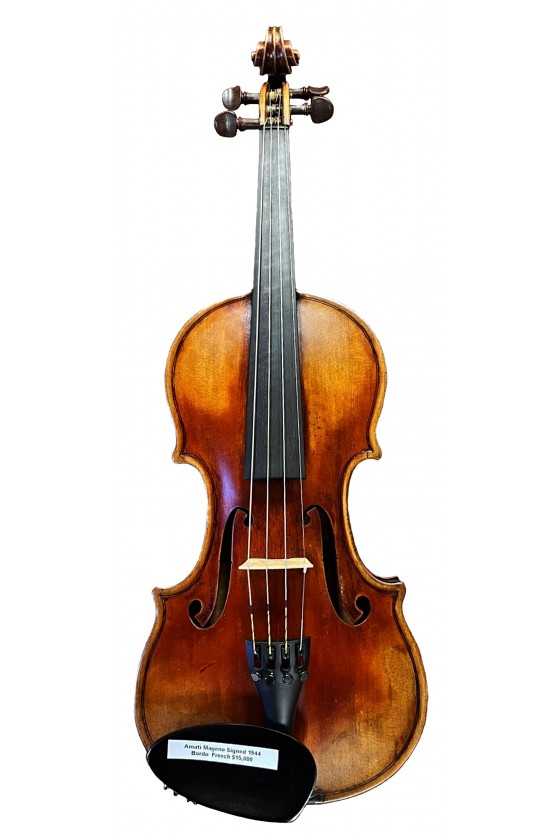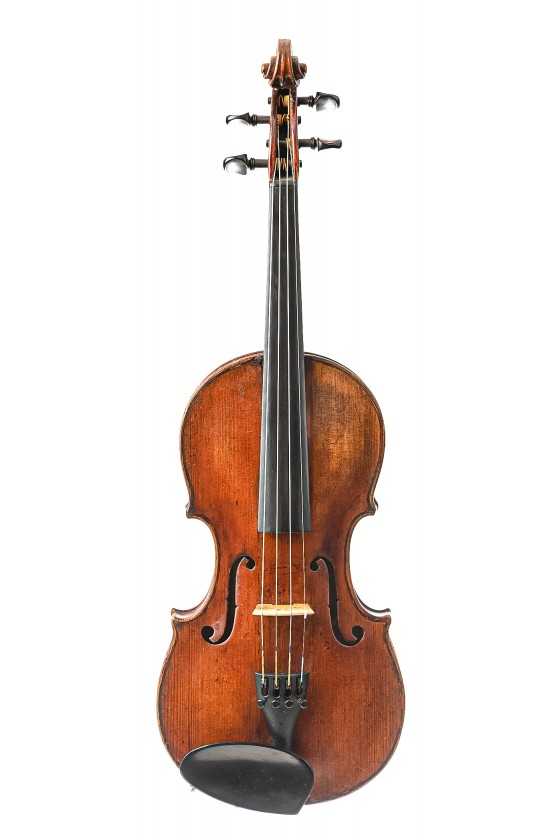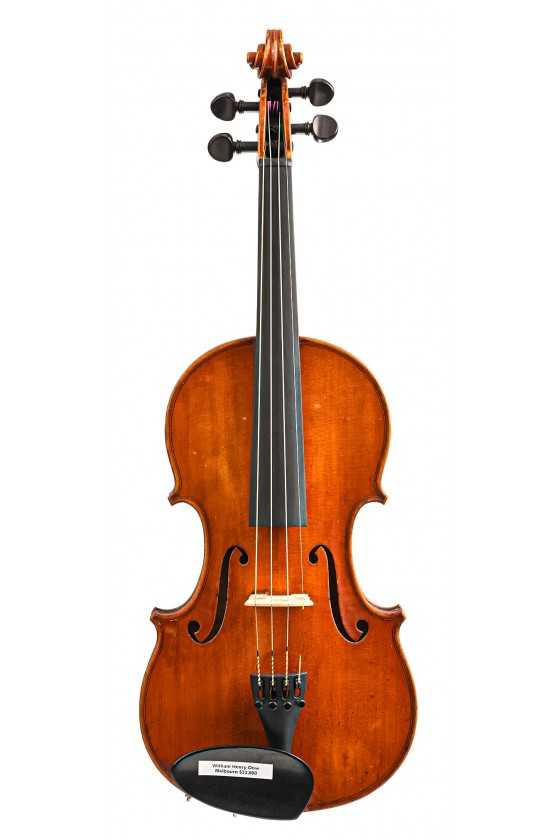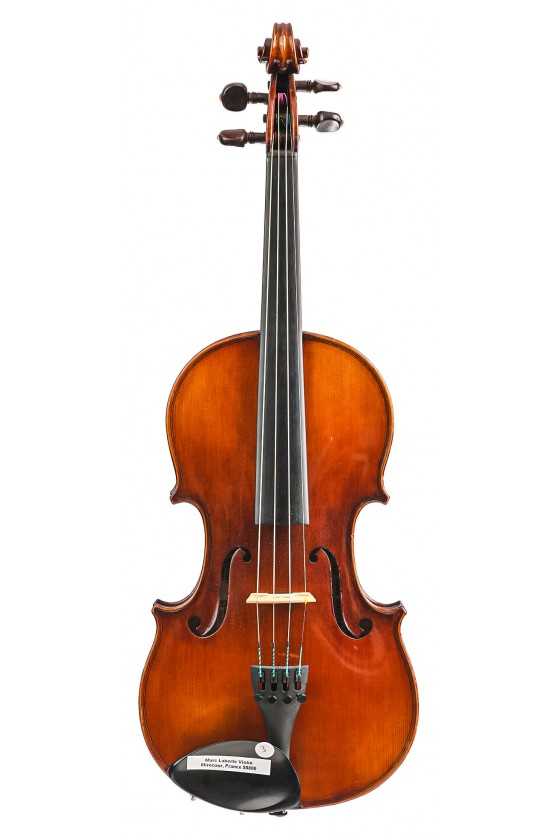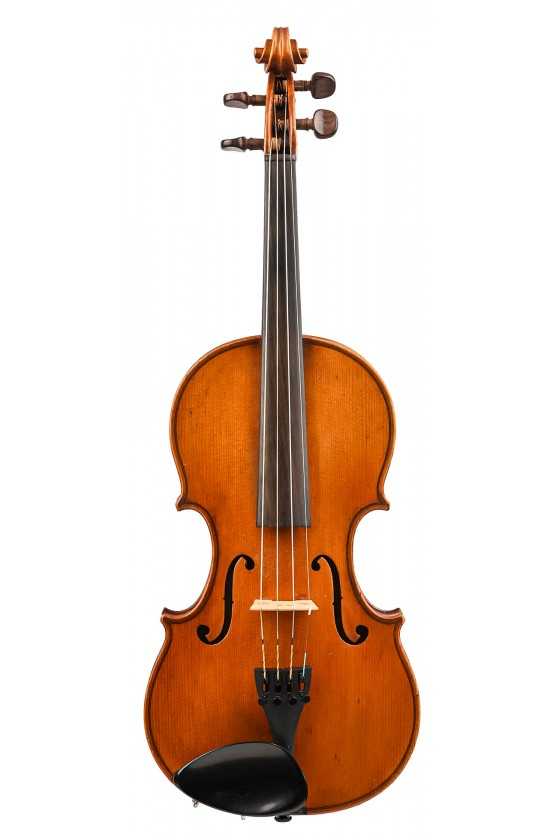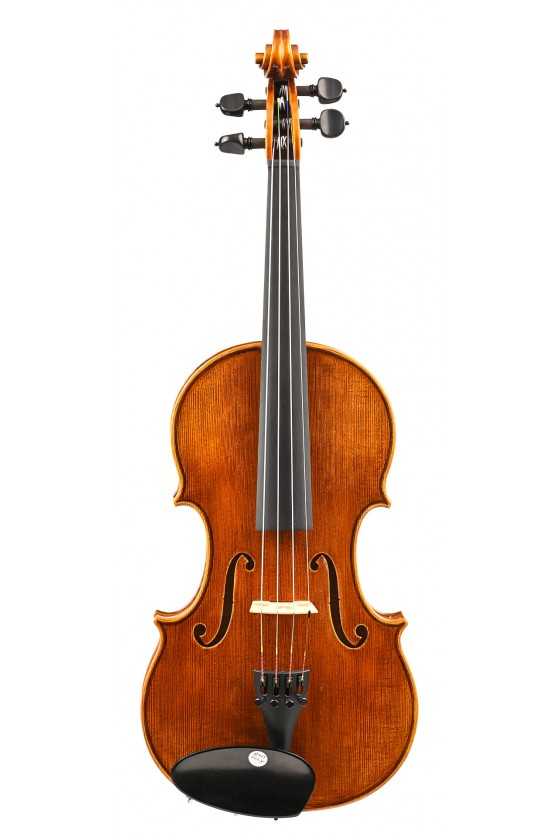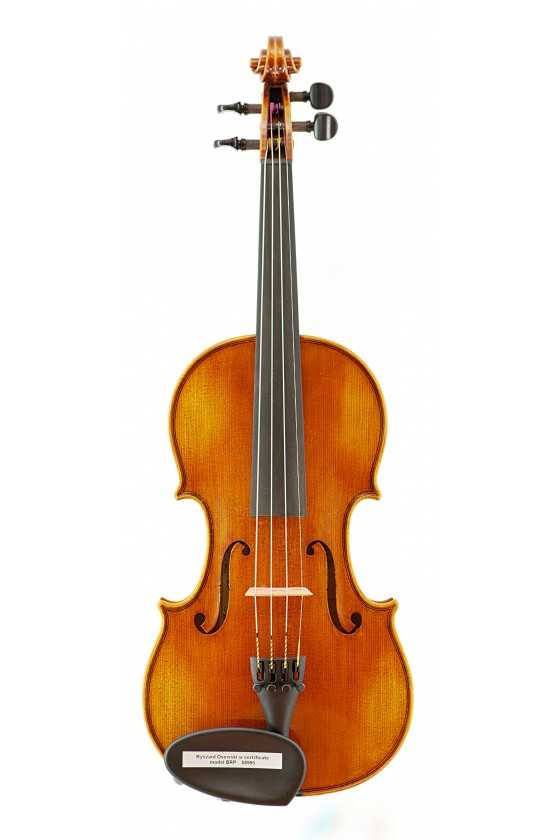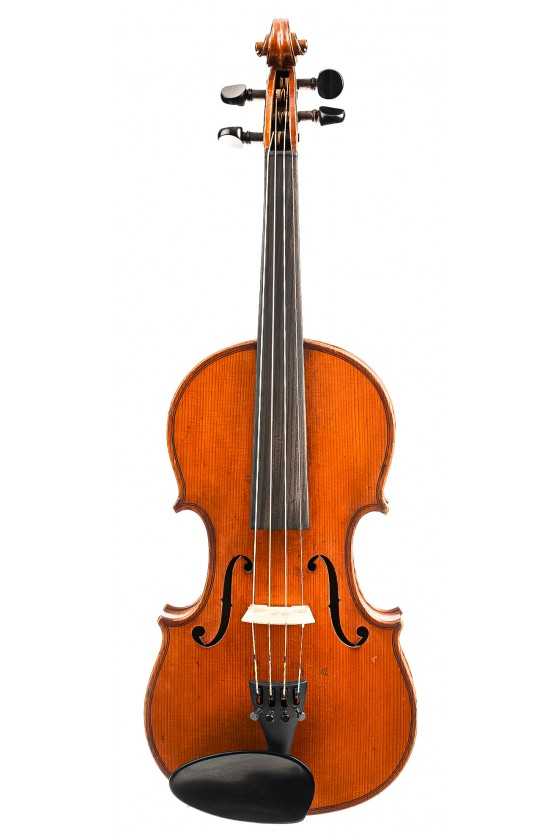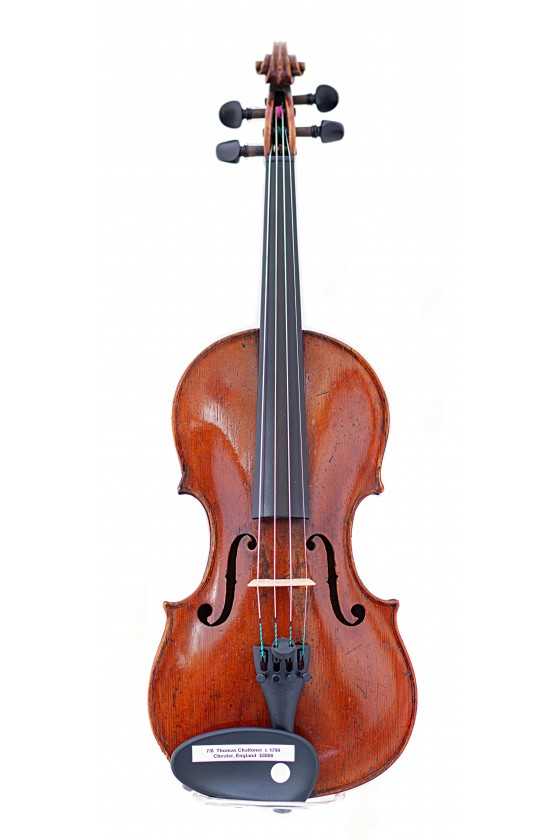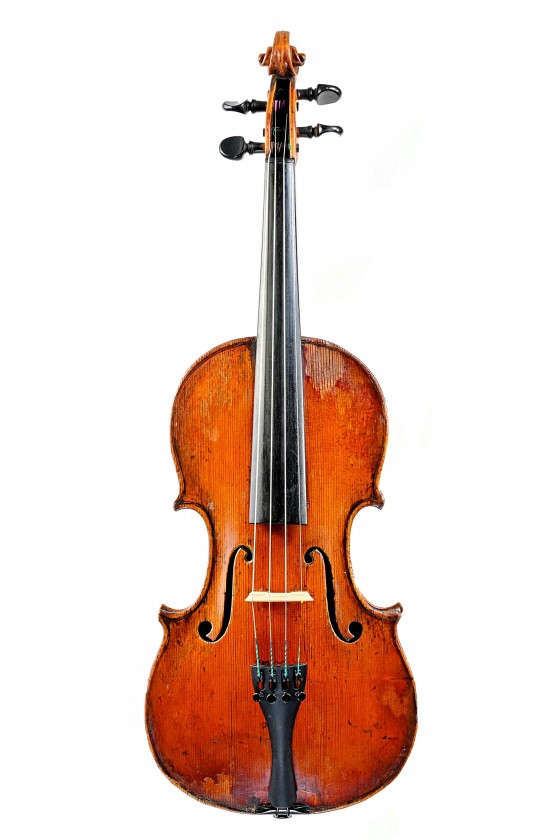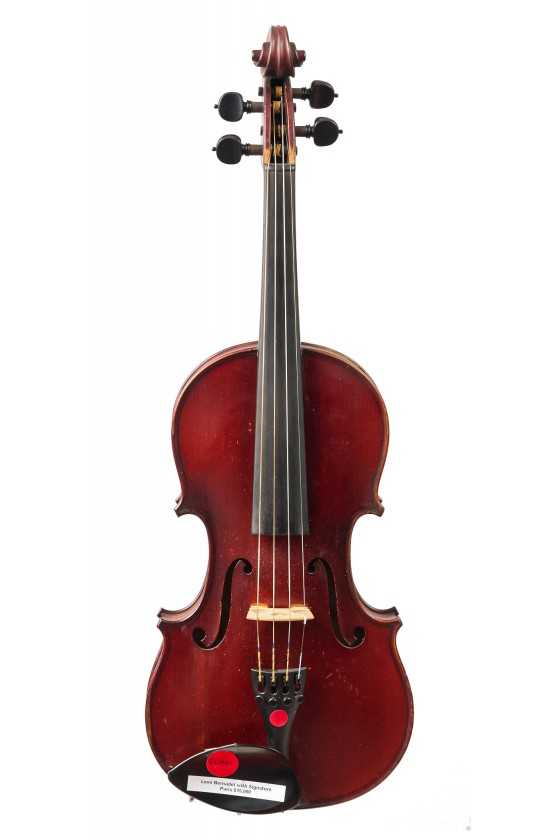Victor Audinot (1870-1943), also known as Audinot-Mourot, came from a family of luthiers in Mirecourt. Mentored by Francois Chardin and Telesphore Barbé, Audinot was mainly influenced by Barbé, who had honed his skills working for Jean Baptiste Vuillaume in Paris. This experience helped shape Audinot’s successful career in instrument making.
Victor worked in Mirecourt, known for luthier tradition, before moving to Paris to set up his workshop on Rue Truffaut in 1913. He dedicated himself to his craft until retiring in 1936. He passed his expertise to five of his six sons and aspiring luthiers. Renowned for creating exact replicas of classical instruments, he crafted an exceptional copy of the ornately decorated Stradivari violin known as the ‘Sunrise’, showcasing his artistry.

